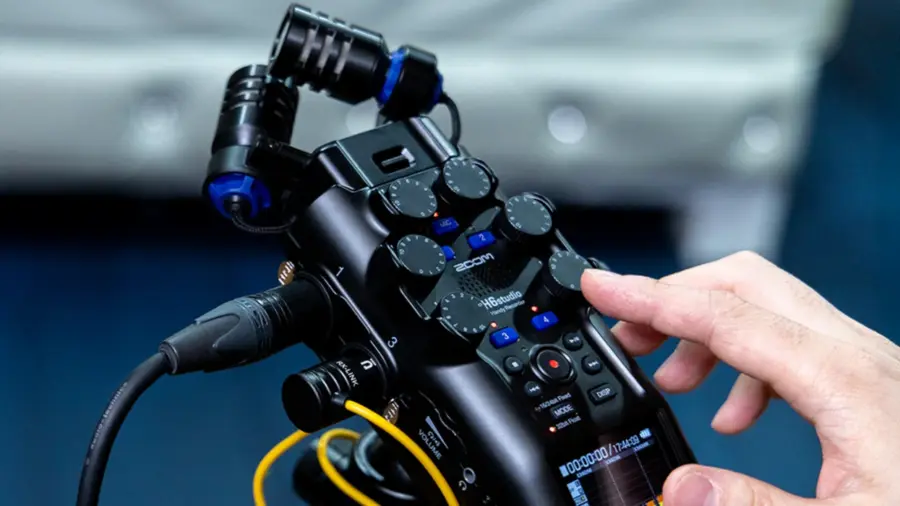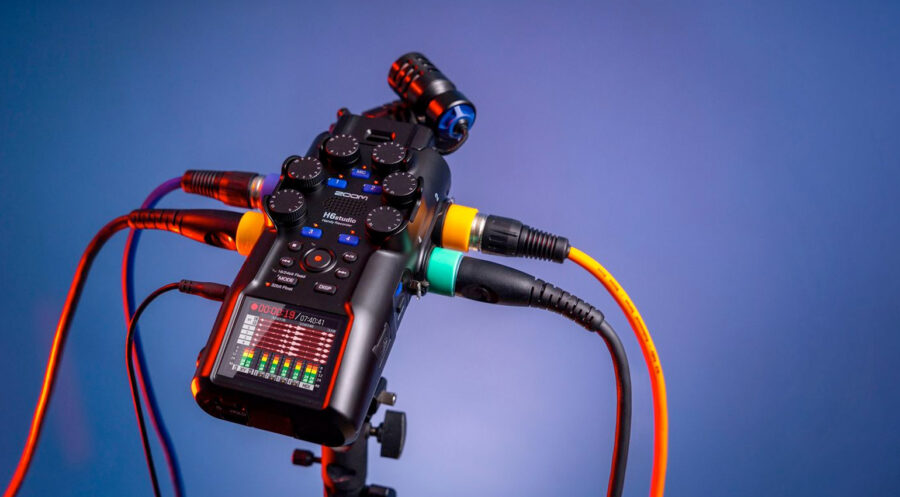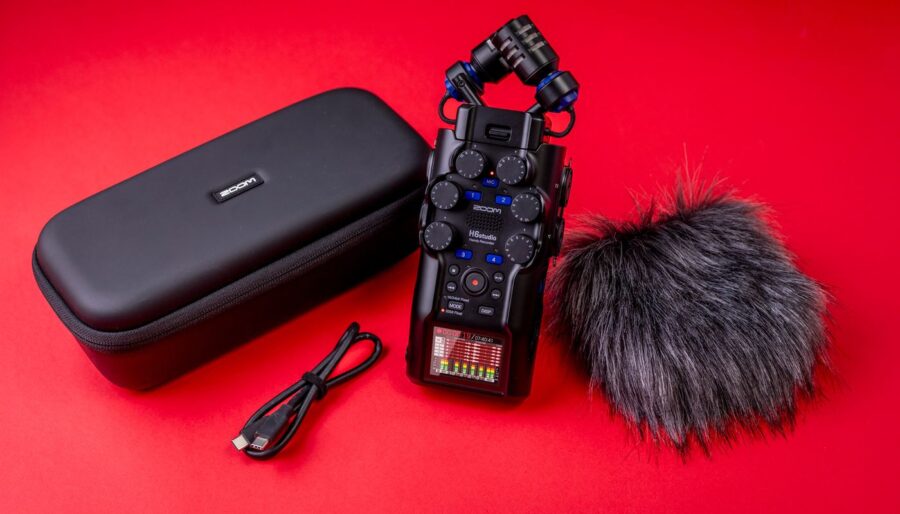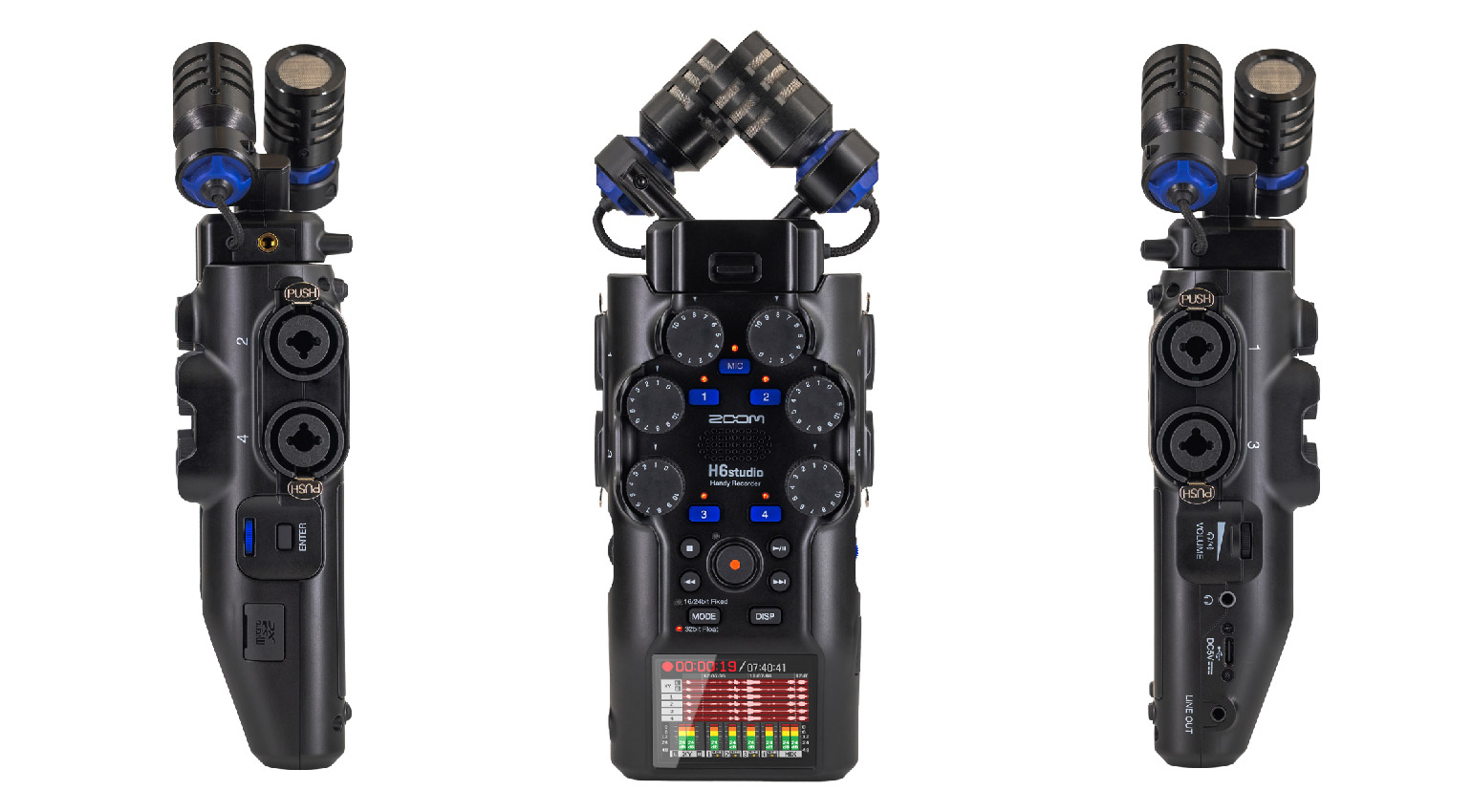Zoom has announced the H6studio, a follow-up to its H5studio portable recorder. With upgraded preamps, six input channels, and 32-bit float recording, the new model aims to serve videographers, musicians, and field recordists who need a compact but flexible solution.
The H6studio builds on Zoom’s long line of handheld recorders by offering more inputs and studio-grade audio features in a familiar portable form factor. Retailing at $399.99, it is now available for preorder through B&H.
More inputs and expanded flexibility
Unlike the H5studio, which supported four inputs, the H6studio provides four XLR/TRS combo jacks plus an additional two inputs via its interchangeable capsule system. Out of the box, this allows recording of six discrete sources plus a stereo mix simultaneously. B&H’s demo highlighted setups ranging from cooking-show style productions with lavaliers and a boom mic, to live outdoor music sessions combining drum overheads, bass, and saxophone.
This added flexibility makes it easier to integrate multiple microphones, wireless systems, or direct feeds from mixing consoles into a single portable device.

32-bit float recording with dual converters
A key feature carried over from the H5studio is 32-bit float recording. Paired with Zoom’s dual A/D converters, this format offers a wide dynamic range and helps prevent clipping, even when recording unpredictable sources. The physical gain knobs now control post-conversion digital gain, meaning adjustments can be made without damaging the original signal.
The recorder supports sampling rates from 44.1 up to 192 kHz, with full track counts available up to 96 kHz. For video professionals, the analogy often used is high-dynamic-range cameras: just as footage from an ARRI Alexa 35 allows highlight recovery, 32-bit float audio provides post-recording latitude.

Upgraded capsules and preamps
The H6studio ships with Zoom’s new XYH-5s capsule, featuring 19.4 mm diaphragms in a 90° XY array. Capable of handling up to 140 dB SPL, it is designed for both detailed and phase-coherent stereo capture.
Internally, the recorder uses Zoom’s F-series preamps, offering an equivalent input noise rating of -127 dBu. These preamps have previously been praised for their clean, natural character compared to earlier H-series designs.
Connectivity and interface options
Alongside the four XLR/TRS inputs, the recorder provides a 3.5 mm stereo line input, a 3.5 mm output for cameras, and a separate headphone output. It functions as a 6×2 USB audio interface for Mac, PC, iOS, and Android devices, supporting 16-, 24-, and 32-bit float capture. Users can also livestream while simultaneously recording a backup to microSD cards (up to 2 TB supported).
Other notable features include:
- phantom power on the combo inputs
- +4 dBu line-level support
- mono mode for interviews and narration
- built-in low-cut filter
- normalize and export functions for WAV files
- variable speed and A-B repeat playback
- a recording start tone for easier video sync

Power, runtime, and accessories
The H6studio runs on four AA batteries for up to 15 hours (without phantom power), and can also be powered via USB or an optional AC adapter. Zoom offers additional capsules compatible with the 3.0 system, including the SSH6E mono/stereo shotgun and the EXH6E two-input expansion module. A dual-channel wireless capsule (WLM1) is expected in 2026.
The device includes a color LCD with selectable display views, a 20 mW headphone output, and a small built-in speaker used both for quick playback and accessibility features such as spoken menu navigation.
Positioned between Zoom’s lines
B&H’s video review suggests that the H6studio occupies a middle ground in Zoom’s lineup: more inputs and professional features than the smaller Handy recorders, but in a more compact form than the larger F-series multitrack units. For creators who need portability without sacrificing flexibility, it appears to bridge the gap effectively.
Are you in the market for a new audio recorder? Let us know what you think about the Zoom H6studio in the comments!
